The Hoarder Who Grew Two Extra Pairs of Hands
“I, however, had never seen anything like A.C.’s house, and I believe my first words were, ‘We have to get you out of here.’ There seemed no time to lose: I could not imagine sleeping one night in such a place, and was alarmed for our new friend, who had obviously been sleeping there, night after night, for decades.”—By Elizabeth Boleman-Herring
By Way of Being
By Elizabeth Boleman-Herring
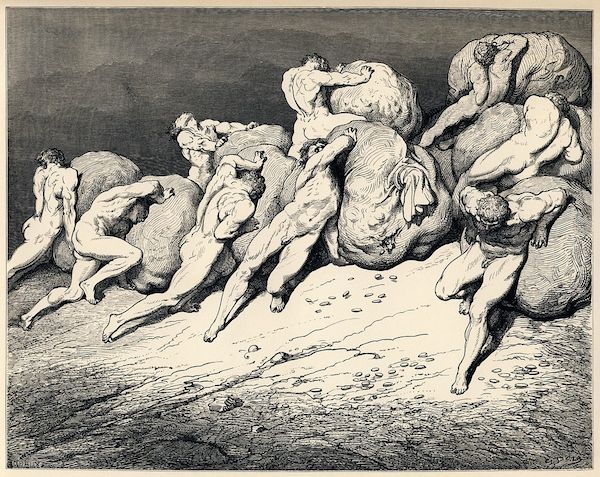
“Interestingly, children’s use of the word ‘mine’ seems to occur before their use of the word ‘yours’ . . . . When ‘yours’ first enters the vocabulary, it is often in an attempt to convince someone that they already have something and should not pursue ‘mine.’”—Randy O. Frost and Gail Stekete’s Stuff: Compulsive Hoarding and the Meaning of Things
“My body and my house are kind of the same thing. I take things into them for solace.”—“Irene,” a hoarder quoted in Randy O. Frost and Gail Stekete’s Compulsive Hoarding and the Meaning of Things
“Perhaps [in the US] we are becoming a nation of hoarders. A generation earlier, in 1947, the psychoanalyst and humanistic philosopher Erich Fromm forecast a society obsessed with possessions. He argued that humans can be characterized by one of two basic orientations toward the world, ‘having’ or ‘being.’”—Randy O. Frost and Gail Stekete’s Stuff: Compulsive Hoarding and the Meaning of Things
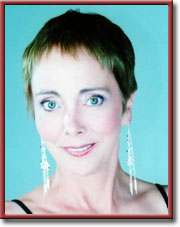 BRIDGE & TUNNEL New Jersey—(Weekly Hubris)—10/6/2014—Some stories—true ones—take a good long while to tell, and even longer to write. In the case of my husband’s and my friend, a hoarder (just one descriptor for the man, among many, many sterling others) I didn’t know, for the longest time, how the story (his, ours, mine) would play out, let alone end, and I didn’t want to write about the ending if it weren’t a happy one.
BRIDGE & TUNNEL New Jersey—(Weekly Hubris)—10/6/2014—Some stories—true ones—take a good long while to tell, and even longer to write. In the case of my husband’s and my friend, a hoarder (just one descriptor for the man, among many, many sterling others) I didn’t know, for the longest time, how the story (his, ours, mine) would play out, let alone end, and I didn’t want to write about the ending if it weren’t a happy one.
We would speak on the phone, A.C. (I’ll call him A.C.) and I, and I would ask how the surfaces in the new house were doing. Was he letting papers pile up again? Was he creating replica collections of never-to-be-read-again books, or containers, or unopened mail or, simply, grocery store bags? Was the new house in any way beginning to resemble the old house? In other words, how was A.C.’s story playing out?
I met A.C. in the summer of 2012. Dean and I were taking a nostalgic road trip through a state I used to call home, and I was writing a little series of essays about barbecue. I’d forgotten one small, crucial detail about Southern barbecue joints, though: most of the very best ones are only open a few precious days a week, as the entire cooking process is so arduous and artisanal. My husband and I had arrived in one town noted for its smoked pork only to find all of my favorite restaurants closed, and one of them out of the pig-cooking business entirely.
Thank heaven, though, that while the place was no longer barbecuing ribs, it was open, and serving up other edibles, so we stayed and sat a while over our “meat and three”. . . and, in the process, made the acquaintance of A.C., a vivid, engaging former engineer in late middle age.
I can’t, now, remember the precise sequence of the events that shortly followed, but I do know that we only stayed in town a week or so and it was only during our second visit back South, several months later, that A.C. invited us to his home, what most people in the South would recognize as a “mill house.”
I don’t think there are any words that might have prepared me for what lay behind his front door, but the house was no revelation to Dean, whose late wife, Carolyn, had also been a hoarder, and differed from A.C. only in that she had had an entire three-floor Victorian manse in Brooklyn to fill, floor to ceiling, with clutter (and cats).
I, however, had never seen anything like A.C.’s house, and I believe my first words were, “We have to get you out of here.” There seemed no time to lose: I could not imagine sleeping one night in such a place, and was alarmed for our new friend, who had obviously been sleeping there, night after night, for decades.
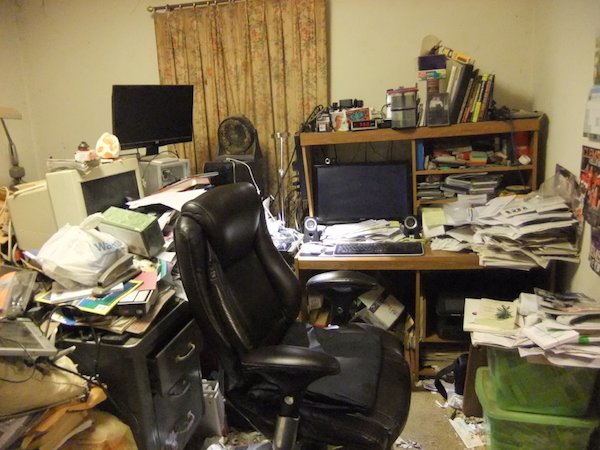
And so it came to pass, Dear Reader, that A.C. is now “out of there,” and into a new house; launched, like a completely re-fitted sailing ship, into an entirely new way of life.
When I first walked in the door of his old house, I could never have predicted the transformation, nor even hoped for it. Hoarding is one of the most recalcitrant of conditions, and hard-wired from the womb.
The manner in which it all transpired—A.C. emptying out his house, with Dean’s and my help, over about a year and a half, his cleaving to Iyengar-style Yoga (a passion for which I somehow infected him with on the day we all first met), and his (also) joining Weight Watchers (almost immediately) in order to stem, to a degree, his hoarding-in-his-body of un-needed food—comprises a chain of miraculous small dominoes that eventually fell, in a rather neat row, one after the other.
If I could parse what it was I did or said that tripped A.C.’s switch from off to on and set in motion this cascade of events, I’d share it. I’d patent it! But, truly, I believe it all boils down to, “When the student is ready, the teacher will come.” Or, when the student is ready, another student (and another) will come and join him or her on the mat.
Dean and I showed up at precisely the moment A.C. was ready to change.
Upon meeting A.C., and seeing his house, I began serious research into hoarding, and found that the best of the books out there is Stuff: Compulsive Hoarding and the Meaning of Things, by psychologist Randy Frost and professor and dean of Social Work Gail Stekete. When I read the book, I immediately insisted A.C. do so as well, and then, by phone, we went over it together point by point.
I should insert a disclaimer here: both A.C. and I are possessed of a goodly amount of grey matter, though we have colorfully divergent skill sets. And I believe that, if one can study hoarding, actually get one’s intellect around the genetic and brain-chemistry peculiarities that contribute to the disorder, one has a fighting chance of changing the hard-wired behaviors that comprise the malady (and many others).
Abstract thought is required to “cure” oneself of this illness. I cannot imagine a person less well-armed than A.C. succeeding in making the painful changes necessary.
In another age, in another time—perhaps as far back as the caves—A.C.’s hoarding and my own hyper-vigilance might have been very useful behaviors in our small tribes of hunter-gatherers. There is some good reason hoarding and anxiety have been selected for and persisted among homo sapiens, but the traits work against us in the 21st century.
Both A.C., an angst-ridden hoarder and procrastinator of the first water, who “went to sleep” much like Rip van Winkle, c. 1975, and only woke again to life in his early 60s, and I, a lifelong hyper-hyper-vigilant and hand-wringing depressive with suicidal tendencies . . . have some wild mis-wiring of our anterior cingulates (greatly to simplify our related “disorders”).
We were both born very bright, but very . . . what? . . . self-destructive? At least in the modern world, self-destructive. We were both custom-designed for the anxious campfires of misty antiquity, where no one ever threw anything away (“Hell, Gork, it might come in handy!”) and the insomniac who kept one-and-a-half eyes open all night, every night, just might prove to be the clan’s savior.
If I hadn’t been, in many regards, A.C.’s brain-chemistry twin, I doubt he would have found the courage to say, “Come on over and visit my house where the only way between towers and piles of objects dating from the 70s is via literal goat paths through the rubble.”
He had to know, after talking with me for more than a couple of hours over two face-to-face visits, what my reactions would be. Perhaps he’d found the hands-outside-his-body to clear his way forward.
A.C. somehow intuited that Dean and I would not “judge him by his hoard.” He trusted us on Day 1, and I cannot really express what a great gift that trust was, for all three of us.
And so, on our first evening at the house, our work began. A.C. could not have begun the clearing out alone but, without his inviting us in (shades of “True Blood”), without his somehow knowing in advance what he was in for, and allowing it to happen, nothing at all would have changed.
The crucial moment in any brand new endeavor, any unexpected undertaking, any great climb or voyage or act of creation . . . occurs before the first step, the first note, the first word. For A.C., I believe it involved a willingness, for the first time in decades, “to be seen”; to be brought back into a shared world, a shared space; to invite “the other” into his circle; to turn the light back on; to wake.
What Dean and I did to deserve that invitation, I do not know but, after we were invited in, we became A.C.’s extra arms and, with his permission—so, so halting and difficult to grant and grievously painful at first—we began throwing away his . . . accumulated stuff.
The vast clear-out happened in stages, like childbirth.
And A.C. fought, to a greater or lesser degree, all along the way. But, once he’d set his mind to changing on absolutely all fronts—his hoarding, his inactivity, his obesity, his being shut off from such human activities as having guests come for dinner or (God help him!) spend time in his new guest room—he put his head down and got on with it.
Once he’d begun clearing out the little mill house, which was truly beyond repair and unlivable, even as the ruined belongings were tossed into an immense, rented dumpster outside the front door, his first real Yoga teacher found him a pristine, new place to live, and he took money out of savings and bought it.
The courage every change required of him was unfathomable to me. Hoarding is so hard-wired that it is utterly automatic, obsessive-compulsive-depth behavior. A.C. was born anxious and life made him more so: hoarding, over-eating, and cocooning himself away beneath his squalor all provided essential comfort for him and, eventually, defined him. (Frost and Stekete write, “Hoarded objects become part of the hoarder’s identity or personal history. In a sense, they come to define his or her identity.”)
A.C. had manufactured a web, only to find himself caught in it.
When I asked, as gently as possible, if I could throw out a myriad of old T-shirts now glued to the bedroom floor by the urine of generations and generations of rodents, A.C. said, “But they’re collectors’ items.”
We’d got to a point by then, about two years into the process, when I could say, with a smile, “Well, A.C., in about 1975, they might have been collectors’ items.”
This past summer, on a flying trip South, Dean and A.C. and I and another good friend named Vet completed the final clear-out of the old house, and now Vet—formerly homeless—has a place to live and a task ahead: to renovate the place and prepare it for rental or sale, whatever A.C. decides.
A.C., ensconced in his new digs in a town nearby, is currently finishing up a Yoga teacher training course, has lost some 50 pounds at Weight Watchers, and is managing to keep his new home clutter-free. He’s also teaching small Yoga classes at home, as part of his training, and finally has clean and unobstructed floor space for two to three Yoga students, as well as their teacher.
And he accomplished all this between his 62nd and 65th years of life, at a time when the die has long been cast for most of us. At the very last moment, A.C. decided his own story needed a very different ending indeed.
Of course, this “story” isn’t simply A.C.’s but, also, mine because, over the same period of time that A.C. was reviving, I myself sank into a seemingly depthless depression, left my Yoga mat for the first time since 1982, gained 20 pounds, and . . . slowly but surely, sank to a low I’d not known was down there beneath me.
Hitting rock bottom, I began, slowly, to rise.
Not coincidentally, while A.C. was heroically clearing out his own hoard, I discovered I had one of my own at home.
At 61 and 62, married but childless, I began sending to my cousins and their children all the family heirlooms I’d inherited. They were clearly dispersed in my will but why, I thought, hold onto them any longer when the next couple of generations might enjoy them now? A.C.’s hoard had made such a deep impression on me that my own “accumulation switch” was thrown.
Other “amassed collections” followed suit. If I hadn’t used something in a couple of years, off it went to Goodwill. When I learned that a dear friend’s home had burned, with all its contents, half my library was UPS-ed to her, and much else is still being shipped, in parcels, off to her in her and her husband’s new house.
Preparing for a move to another state, Dean and I have also sent to auction most of what my mother left me in terms of immense antiques and “collectibles.” I did not want to face transporting, yet again, a group of Louis Vuitton handbags, or a Shascha Brastoff tea and coffee set, or even a “valuable” Bentwood rocker in which I was never comfortable. Huge, 19th-century furniture went for a song at auction, but I found the pain of losing it for so little was short-lived.
A.C. and his dumpster had taught me a lesson I, too, needed to learn, and just in time: “You really can’t take ‘it’ with you, so why in heaven’s name would you want to crate, ship, and worry about ‘it’ an instant longer than it gives you any real pleasure?”
Why, when others need things, did I still have so many things I no longer needed? Once I drew the firm line between “needed” and “not-needed,” I suddenly had more space of all sorts in every area of my life: floor space, space not occupied by things-to-dust, space not interrupted by things that took me back to the past or reminded me, in any way, of emotional loss.
In my culling, I was ruthless and, after an initial pang or two, I found the process as liberating as casting off from the shore in a small, sturdy, seaworthy boat, quite ballast-free.
I’m not sure A.C. has reached that point, yet, where divesting himself of clutter, of possessions, is actually pleasurable.
The neuroscientists don’t yet have many of the answers regarding the origins of obsessive-compulsive behaviors, of recalcitrant depression and of anxiety, among many, many other inherited stuff that plagues the human psyche.
I suspect A.C. and I have never really felt “safe” in the world, or “safe enough,” and our padding of our nests, our voracious eating, our “collecting,” and our retreating, upon occasion, from society are all part of a greater problem, with which we were born.
But I have learned one thing, since 2012, about feeling more at ease, feeling safer, in the face of the existential problems we all face: it helps a great deal, much of the time, to do things with six or eight hands as opposed to two.
The trick, of course, is to realize the truth of this, and invite those hands on board.
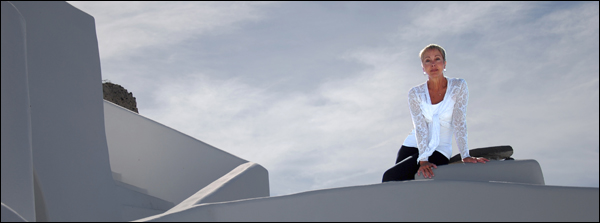
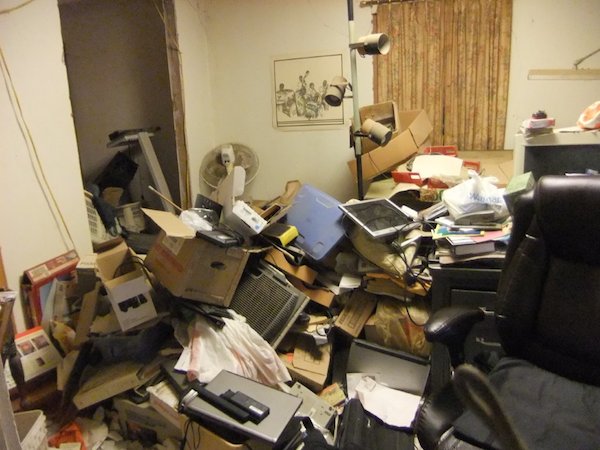
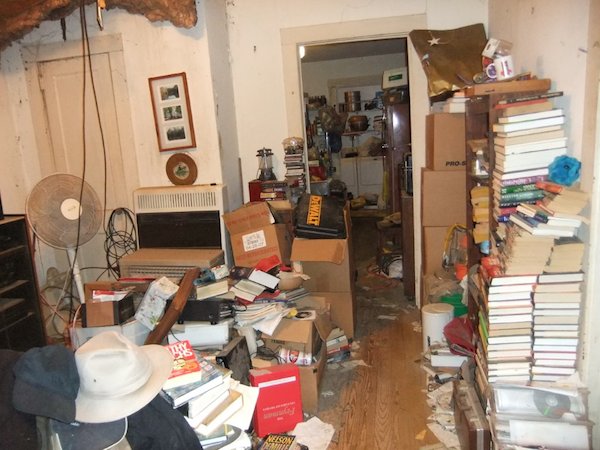

10 Comments
Skip
Now I understand why the move to FL is taking so long. Great story, Skip
Elizabeth Boleman-Herring
Thanks, Skip. WE have very little to move to FL . . . except music!!!
Laura
Now for the MUSIC !!!
Elizabeth Boleman-Herring
Laura, those 10,000 or so records are not considered–by one of us–a hoard. :-)
Scott Whitfield
E, this is one of your absolute best columns ever, and topical to someone I know. Talk soon…….
Elizabeth Boleman-Herring
Thank you, Scott: I believe it’s on point for one and all of us in America . . . some, more than others. :-)
Michael House
One must. of course, differentiate between hoarders and the honourable community of collectors, of which I am a charter member.
Elizabeth Boleman-Herring
It’s a fine, fine line between and betwixt, Michael, and both tend to die in the midst of . . . stuff. I’m doing my best to be, no longer, either: it’s been a sea-change for a collector of books. Also, only ONE collector per house, and Dean’s in far deeper than I!
Jean Nolan
Thank you for this lovely – and cheerful! – piece. I, too, know several folks who struggle with this problem, and you are right about it requiring an intellectual effort to overcome. I am so happy for A.C.!
Elizabeth Boleman-Herring
For A.C. and for me, Jean: in his house I saw reflected the state (not so obvious) of my own soul.